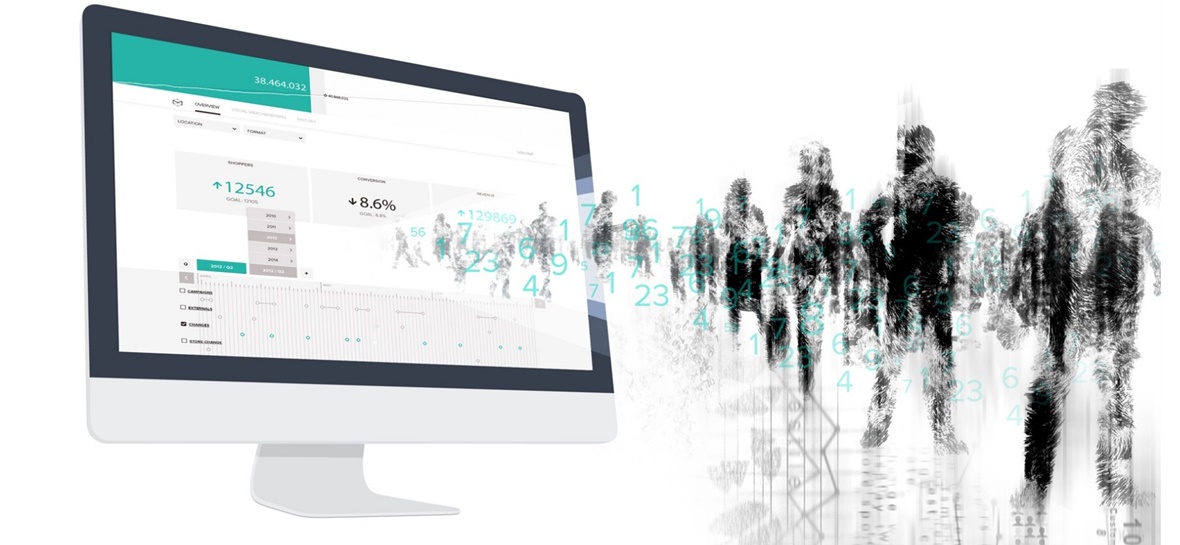
Image Source: Wavetec Customer Journey
As avid Apple fans anticipate the release of the iPhone 7 they are faced with a dilemma: Join the masses queueing outside the local Apple Store, or escape the crowds and order online for next-day delivery.
Both options come with various benefits; the anticipatory buzz of the 8 a.m. grand unveiling and the hands-on experience with retail staff, versus minimal effort, simple PayPal payments and delivery updates direct to your inbox.
The Value of Shopping Experiences

Image Source: Elotouchpos Blog
More and more, consumers are opting for the online shopping experience over visiting bricks and mortar stores. In-store traffic continues to decline and as a result we are seeing plummeting sales revenues, with tech savvy shoppers shying from making in-store purchases. Google estimates 84 percent of shoppers with smartphones use their mobile devices to help them shop while in a physical retail store.
Armed with those smartphones, consumers are turning to digital tools to complement the physical store offerings, as such, the retail experience is entering the digital world … A place where sensory technology meets advanced mobile beacons and apps, all layered with personalized enhancements to transform the customer journey.
Sensory Technology Tracks Your Journey

Image Source: Retail Week
Sensory technology follows your journey through the store, aisle by aisle, gaining insight on attractive products as well as store bottlenecks.
By gathering data on how customers interact with key touchpoints in store, businesses can map and realign the customer journey, pushing relevant promotions and even changing the way we pay. So just how are they doing this?
Many stores opt for video surveillance, for example in malls to visually gauge the number of customers and their whereabouts. The UK’s largest retailer, Tesco, uses heat sensors to measure this, helping the chain to reduce congestion in the store and at tills.
T-Systems, a German global IT services and consulting company headquartered in Frankfurt, offers a variety of Indoor Analytics solutions that use WiFi connections to track customers who opt-in to the service. The information is not connected to an individual, rather it is used to understand mass in store footfall patterns and purchase behaviors.
This form of technology has also been made accessible to smaller retailers, with the release of tools such as the Aurora sensor. The sensor creates geo-fenced audiences — using a combination of WiFi and Bluetooth low energy (BLE) – to measure customer traffic, visit frequency, duration and more.
But do consumers want to share this information? A recent study from ResearchNow, commissioned by Swirl, found that 77 percent of consumers would be happy to share their location information as long as they were getting value from it. Swirl believes consumers are ready for this enhancement to their shopping experiences, and retailers need to catch up.
Mobile Beacons Empower Customers
![]()
Image Source: SlideShare
Micro-location iBeacons and branded retail apps connect the in-store physical journey with mobile enhancements meaning they can share information with shoppers.
This means customers can receive push notifications, such as greetings or product deals, directly to their mobile devices. They can also search item location, availability and product details.
Apple retail stores are already making use of this technology to complement the Apple Store app, prompting users with upgrade notifications when they enter the relevant part of a store.
In the final stages of the customer journey, iBeacon and other competing near-field communications (NFC) technologies can be used to make instant mobile transactions. Taking the online payment into the store, creating a smarter self-serve tool could help to cut queues and increase shopper autonomy, and enable better upselling opportunities, tailored by customers’ buying histories.
Business Insider predicted that beacons would “directly influence” over $4 billion of retail sales in the U.S. in 2015, with big brands like Macy’s and Target jumping on the beacon bandwagon. It is estimated that by 2018 there will be some 4.5 million beacons in use, with retailers investing $2.5 billion in the Internet of Things, bringing bricks-and-mortar into the digital world.
Biometrics Recognize Unique Identifiers

Image Source: Consumer Report
The next-level in personalized retail analytics tools combines sensors with individual recognition, using cutting edge biometric technologies. These include facial recognition, fingerprint and iris scanning, and voice identification systems. These gadgets rely on two components: the sensory technology to pick up your unique identifiers, and the complex databases that remember you and your preferences.
Facial recognition tools, traditionally limited to military operations, have made their way into the store. These systems scan customer faces, they are able to identify demographic details, such as age range, gender and ethnicity, to tailor relevant pop-ups and ads. Software firm CSC claim almost 30 percent of retailers use this technology to track customer behavior.
The study reported that 74 percent of stores use technology to track customers, and 28 percent of consumers believed this is useful.
This sort of tech uses more than just individual recognition, it can read your actions and respond accordingly. Take South African coffee company Douwe Egberts, which successfully marketed its product at O.R. Tambo International Airport, using facial recognition technology to identify travelers that were yawning, serving a free coffee to sleepy faces.
MasterCard, Google’s Digital Wallet and Amazon all allow users to pay with a ‘selfie’ using hand’s free facial recognition technology. But this too could soon be replaced with a simple fingerprint payment authorization on a 3D touch phone. According to Biometrics Research Group, the mobile biometrics industry is predicted to hit $45 billion in revenue by 2020, with over 2 billion smartphone users able to access these technologies.
Personalized Augmented Shopping Experiences
When customers share personal information with retail apps, the experience can be tailored to their preferred products through the provision of relevant deals, events and more. Much more than just knowing your name, by understanding your shopping patterns and habits the entire experience becomes personalized.
This is not only limited to your digital browsing within the retail app, BLE pop-ups and targeted ads are now customized with your own behavioral data, and real-time external analytics giving personal recommendations, even taking into account food allergies.
If they know you’ve been reading up about the iPhone 7, they’ll help you reserve your device, warn you what time you’ll need to get there, where to park and, depending on the weather, new tools might even suggest you bring an umbrella.
Augmented reality brings these technologies into the store, projecting digital images onto physical spaces. In China, consumers use their devices to navigate virtual shops in public spaces, using the Yihaodian AR app.
SaaS providers such as Thirdshelf work with retailers including LXR&Co to provide a more personalized shopping experience in boutique stores. Consumers have access to a personalized dashboard, which is built from a customer’s transaction history, and comes complete with wish lists and recommendations that follow them around a store. What’s more, this information is aggregated helping retail employees to get a better understanding of customer needs.
We’ve come a long way from the days of QR codes and customer loyalty cards. Today, using advanced sensor technologies, digital meets the physical in a seamless AR shopping experience. Many of these solutions also give businesses an opportunity to customize and integrate their existing customer flow solutions like queue management systems in order to make the shopping experience more personalized.
The benefits of the online model are no longer restricted to the home shopping experience, and as retailers nationwide embrace new technologies they will change the way we interact with products, using big data to reverse engineer the customer journey to better suit our needs and preferences.




The option of combining beacons with WIFI tracking is not very practical. Can WIFI routers works with beacons in an integrative way? It seems not, since WIFI IDs and beacons IDs are not the same, so the matching between both IDs are not possible.
So there is no way to use WIFI analytics to exploit beacons capabilities. Both technologies work separately.
There are companies such as Seeketing which solve this issue, providing unified IDs when sending push notifications.
People interested in ibeacons and WIFI tracking will like to read more:
http://www.seeketing.com/corp/index.php/blog/57-seeketing-nodes-a-step-beyond-ibeacons